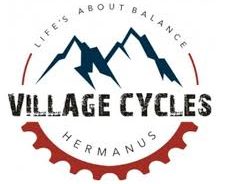It all started in the early eighties when cycling pioneers Geoff Apps and Gary Fisher started playing around with the idea of putting bigger wheels on the then brand new kid on the block, the mountain bike.
You see at the most basic level, a 29er refers to a mountain bike built with a larger rim than a regular mountain bike which uses a rim of 26” in diameter. The “29” is actually a bit of a misnomer, as it refers to the approximate diameter of the entire wheel (with a tyre mounted). To be more specific about rim size, the 29er uses rims typically also used for road-racing, cyclo cross, touring and hybrid bicycles or commonly known as the “700c.”
Their idea never really got off the ground due to various reasons, but a few smaller companies and dedicated believers kept the flame burning, but it was not till 2002 that Gary Fisher Bicycles (now part of Trek Bicycles) were the first of the major manufacturers to offer a line of 29er bikes.
Today, 12 years down the line, most bicycle manufacturers not only offer a wide range of 29er bicycles and frames, but most of them have even dropped the 26” model completely – oh how things have changed!!

Even companies that openly dismissed 29ers as a bad idea or passing trend are now brining 29ers to the market and cannot keep up with supply.
But why would I want to exchange my mountain bike for a 29er. Here is a quick rundown.
The 29er offers the following:
- Better rolling resistance (by some 10%)
- Better bearing resistance and wear (by some 10%)
- Less tyre wear (by at least 10%)
- Better roll-over stability while climbing and descending
- Better overall comfort over a ride
- Better grip and cornering balance
- Better traction
- More pinch-flat resistance
- Compare that to what your old steed gave you:
- Weight saving (300-400g lighter on the complete hardtail bike, all else being equal)
- Due to this weight advantage : faster acceleration, by around 2%
- Wheelies are easier, the front lifts more easily.
- Better flickability in extremely tight corners (where walking would actually be faster)
- Better wheel stiffness

